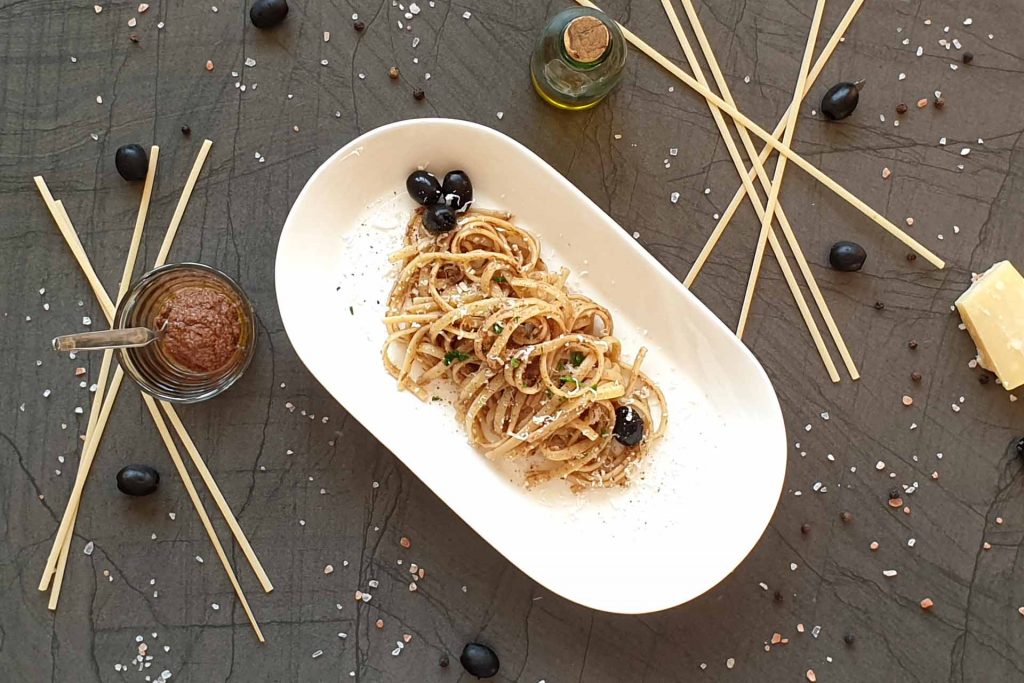Linguine (tongue, Italian lingua ‘tongue’) or linguini is a type of pasta that resembles spaghetti but is flat. They are usually served with pesto alla genovese. The individual noodle is about four millimeters wide when cooked.
[addtoany]
Delicious linguine recipes
[adinserter block=”1″]
Origin of the linguine
Originally they come from the Italian region of Campania. In the area around Genoa they are called trenette or also bavette.
Preparation
- Put the desired amount in boiling salted water and let it soften. Stir with a wooden spoon so that the pasta does not stick to the bottom of the pot or even to each other. They must float!
- Pasta needs enough space when cooking. So take a sufficiently large pot. In addition, the pasta also needs plenty of water so that the starch adhering to them dissolves in the boiling water.
- First, quickly bring the water to a boil in a covered pot, then salt generously, preferably with coarse sea salt.
- The often-heard tip to add oil to the water must not be followed under any circumstances: the oil “seals” the surface of the pasta so that no sauce can adhere later.
- Do not drain the noodles completely! They will get cold, dry out and stick together! Quickly drain them through a large sieve and immediately mix with the sauce together with the adhering water.
- The right amount of pasta (dry pasta) per head: Starter: 50 to 80g/0.5 to 0.8cups; Main course: 100 to 120g/1 to 1.2cups; Side dish: 30 to 40g/0.3 to 0.4cups.
[adinserter block=”14″]
